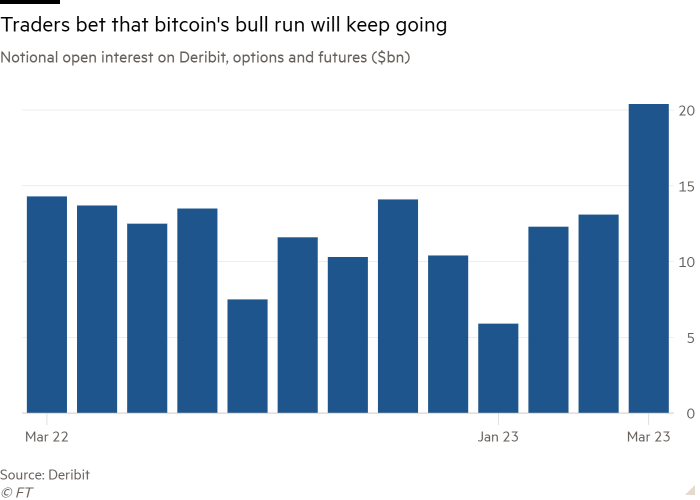Blockstream developer Neigut expects ‘Cambrian Explosion’ of Bitcoin Layer 2 protocols

The Bitcoin ecosystem, derided in some crypto developer circles for its slow technological progress, is now on the brink of a Stage 2 “Cambrian Explosion.”
That’s according to Lisa Neigut, a Lightning Protocol engineer for Bitcoin infrastructure firm Blockstream, during her “state of the chain” presentation at CoinDesk’s Consensus 2023 conference last week.
The catalyst will be increased functionality from new features, including pacts and script updates, according to Neigut. Agreements such as bitcoin improvement proposal (BIP) 118 (also known as SIGHASH_ANYPREVOUT, or APO for short) are Bitcoin smart contracts that place restrictions on how a bitcoin (BTC) can be spent. Script updates include a proposal by Blockstream to introduce Simplicity, a new programming language for Bitcoin smart contracts.
The network is already in the midst of a technical renaissance that can be attributed to the introduction of Bitcoin non-fungible tokens (NFT) via the Ordinals protocol. More than 3.3 million of these NFTs or “inscriptions” have been produced in less than five months.
Bitcoin development tends to be slow and steady, but Neigut says the flywheel effect will be triggered once certain functionality is in place at the base layer.
“The APO is hopefully going to unlock a Cambrian explosion with these script updates and new pacts,” Neigut said. “So I think a lot of new layer 2 stuff will come in the future.”
The world’s dominant blockchain already has one of the most diverse layer 2 ecosystems of any network. Bitcoin currently has six major layer 2 protocols – the Lightning payment network, the Liquid sidechain, the Fedimint and Cashu protocols, wrapped bitcoin (wBTC), and Bitcoin state chains.
Bitcoin’s Diverse Layer 2 Ecosystem
lightning
The Lightning Network is a Bitcoin layer 2 scaling system, or more precisely a payment channel network, where a collection of interconnected computers routes bitcoin payments off-chain.
Ryan Gentry, director of business development at Lightning infrastructure firm Lightning Labs, said during his own presentation at Consensus that Lightning is the only network of its kind in crypto. “Lightning is unique,” Gentry said. “There is not, to my knowledge, another widespread payment channel network in the entire crypto space. Lightning is the only one, and it scales very well.”
Lightning’s network capacity – the total amount of bitcoin in the system – is currently just over 5,425 BTC (nearly $155 million).
Liquid
Blockstream published a white paper on sidechains back in 2014. The firm currently has a fully functional Bitcoin sidechain—a secondary blockchain that interacts with a primary blockchain—called Liquid, which allows users to issue security tokens and other digital assets.
Fedimint and Cashu
Both Fedimint and Cashu are Bitcoin escrow protocols. They borrow from a concept called “Chaumian mints”, originally conceived in 1983 by renowned computer scientist and cryptographer David Chaum.
Chaumian mints use blind signatures to preserve user privacy. Blind signatures enable a sender’s message to be cryptographically obscured (or hidden) before it is digitally signed by the recipient, thereby preserving the sender’s anonymity.
Fedimint goes a step further by combining Chaumian coins with multisignature (multisig) capability and communities or federations that help their members deposit bitcoins to create a protocol that enables community-based depository.
Wrapped bitcoin
Wrapped tokens are synthetic (or tokenized) versions of cryptoassets that are not native to the blockchains they exist on.
Wrapped bitcoin (wBTC) is an ERC-20 token backed by 1 BTC and is commonly used in Ethereum’s decentralized finance (DeFi) ecosystem.
Bitcoin state chains
Bitcoin blockchains are the brainchild of self-styled “Bitcoin Sorcerer” Ruben Somsen. Statechain users hold bitcoin in a 2-by-2 multisig wallet controlled by the user and some statechain federation (a group of entities). When the user wants to transfer funds, they simply hand over their private key (also called the transfer key) to the recipient.
Statechains offer a scaling advantage similar to Lightning because they are executed off-chain.
What comes down the pike
Some Bitcoin layer 2s like Lightning have been around for years. Others like Cashu are still experimental. Neigut says new developments like Bitcoin’s “Inquisition Signet” testnet will not only help speed up some of these experimental projects, but also test the robustness of new proposals.
Some of these proposals may include things like validity summaries, first written about by Bitcoin researcher John Light. A Validation Digest will combine a large number of off-chain transactions, validate those transactions, and then submit the validated batch as a single “rolled up” transaction to the Bitcoin blockchain.
“There’s a lot more going on in Bitcoin,” Neigut said. “Miniscripts, which is a new way of expressing and writing Bitcoin contracts. CoinSwaps, which is a way of exchanging bitcoin in a way that makes it much harder for a third party to tell who sent coins to whom. I just touched the tip of the iceberg.”

























